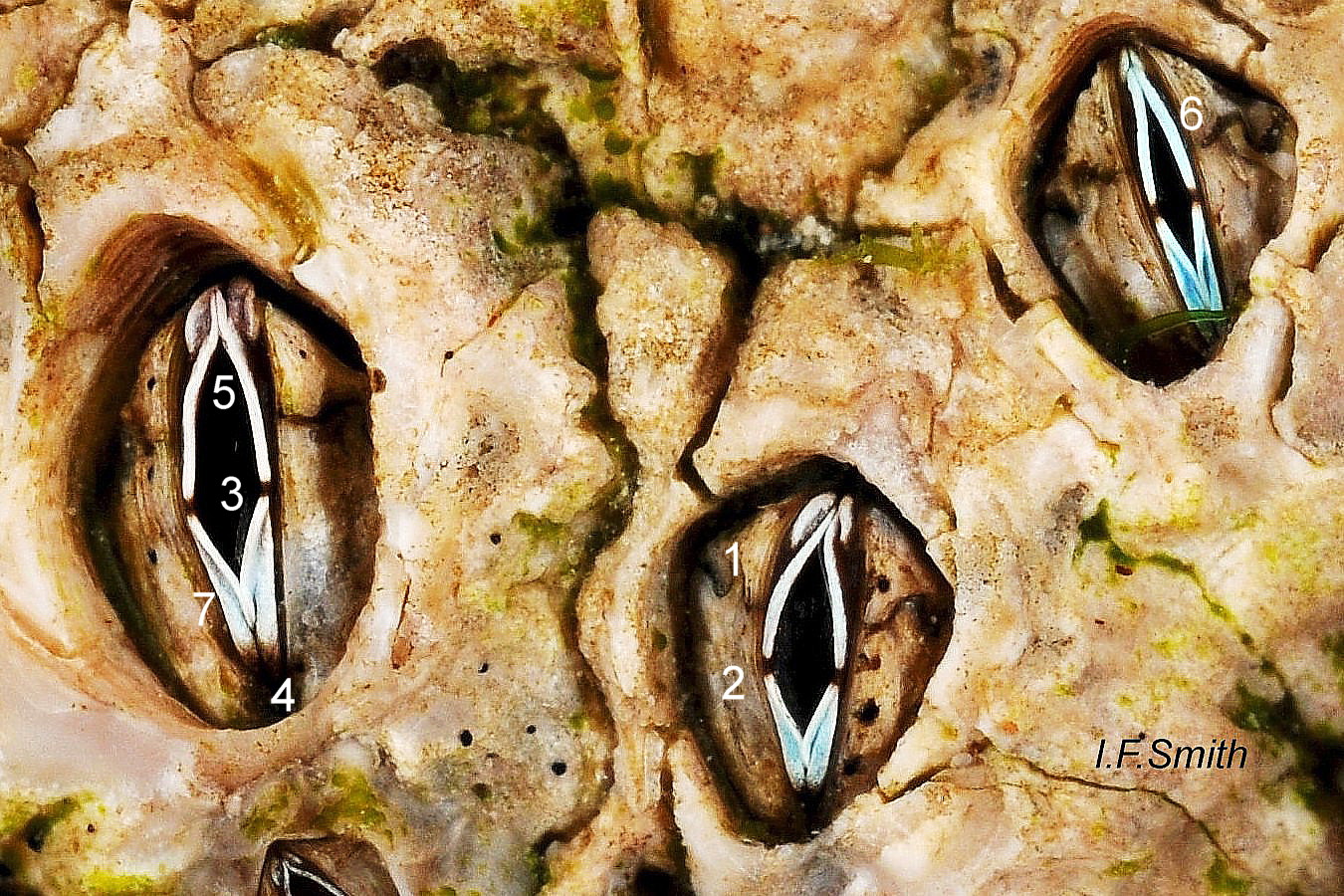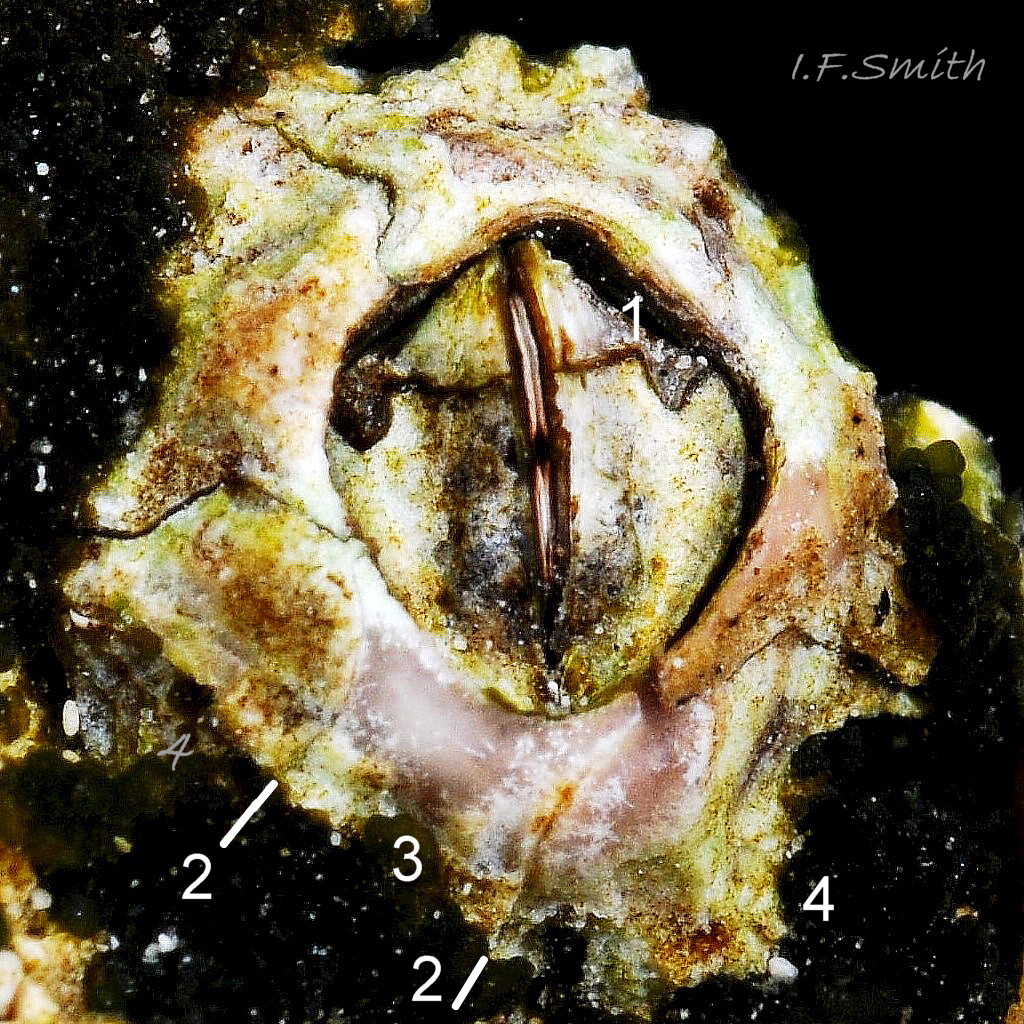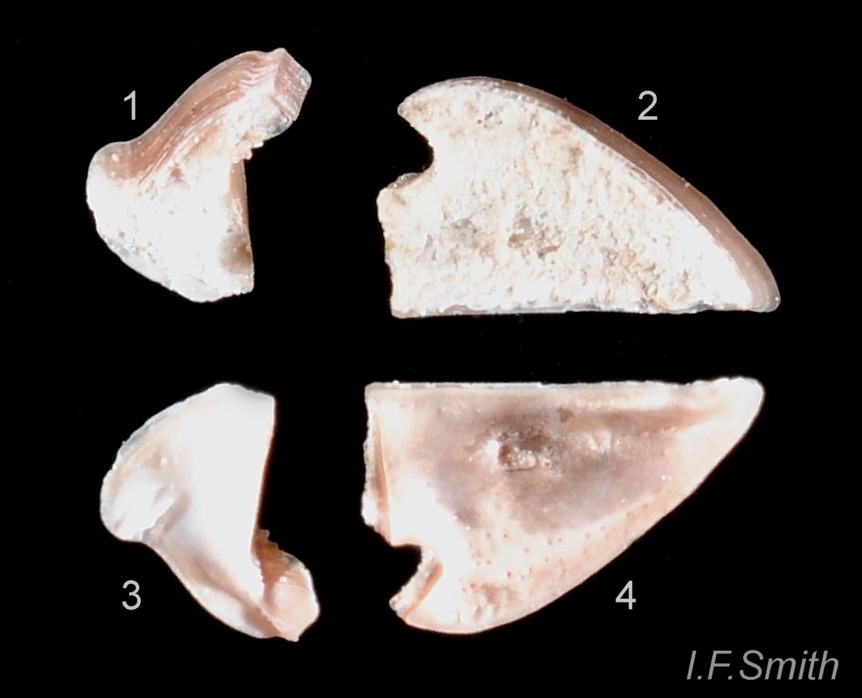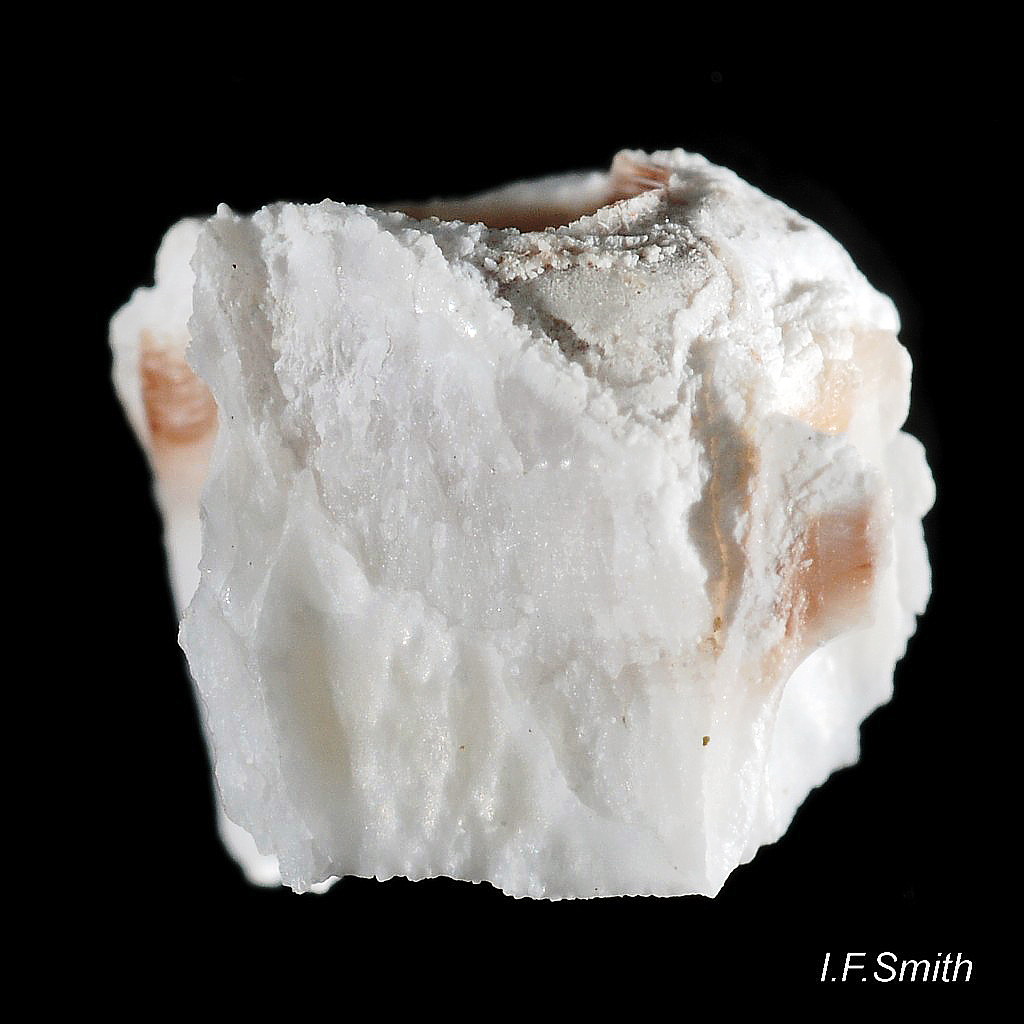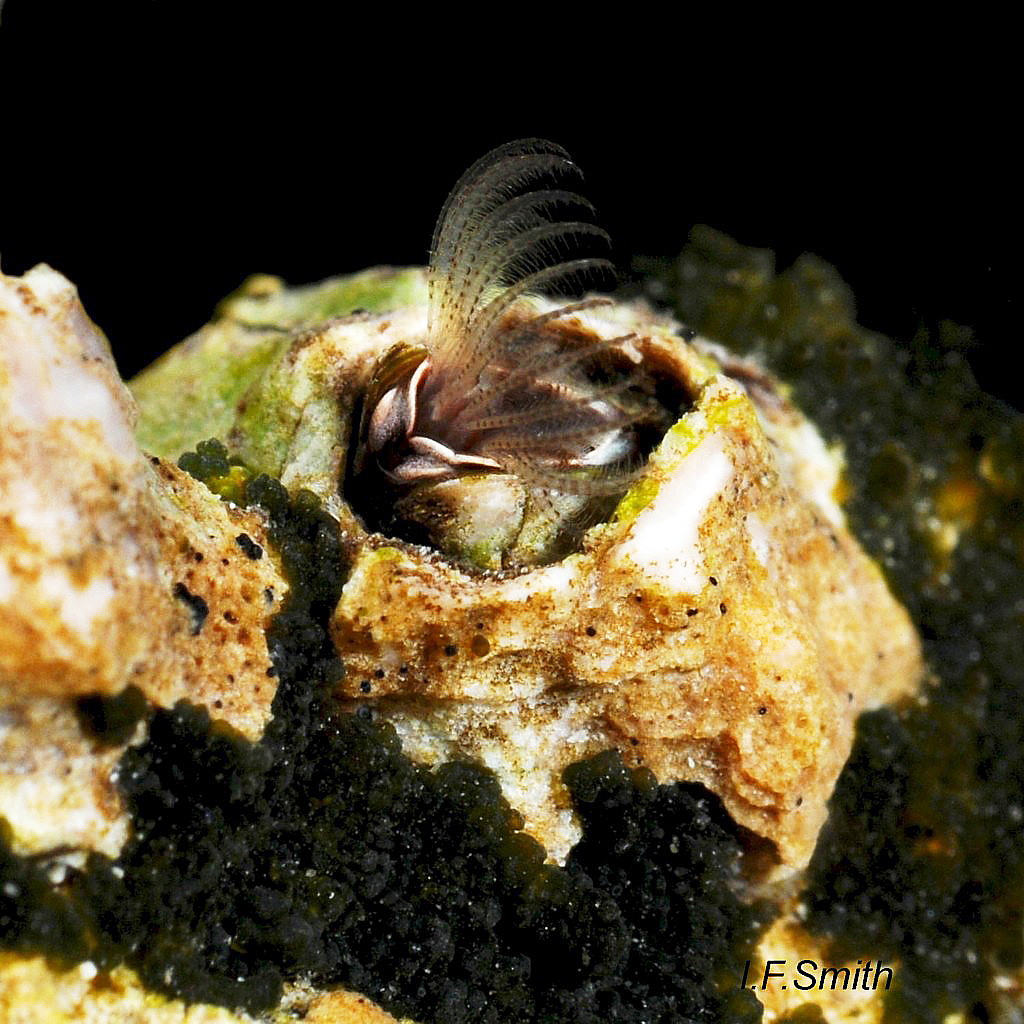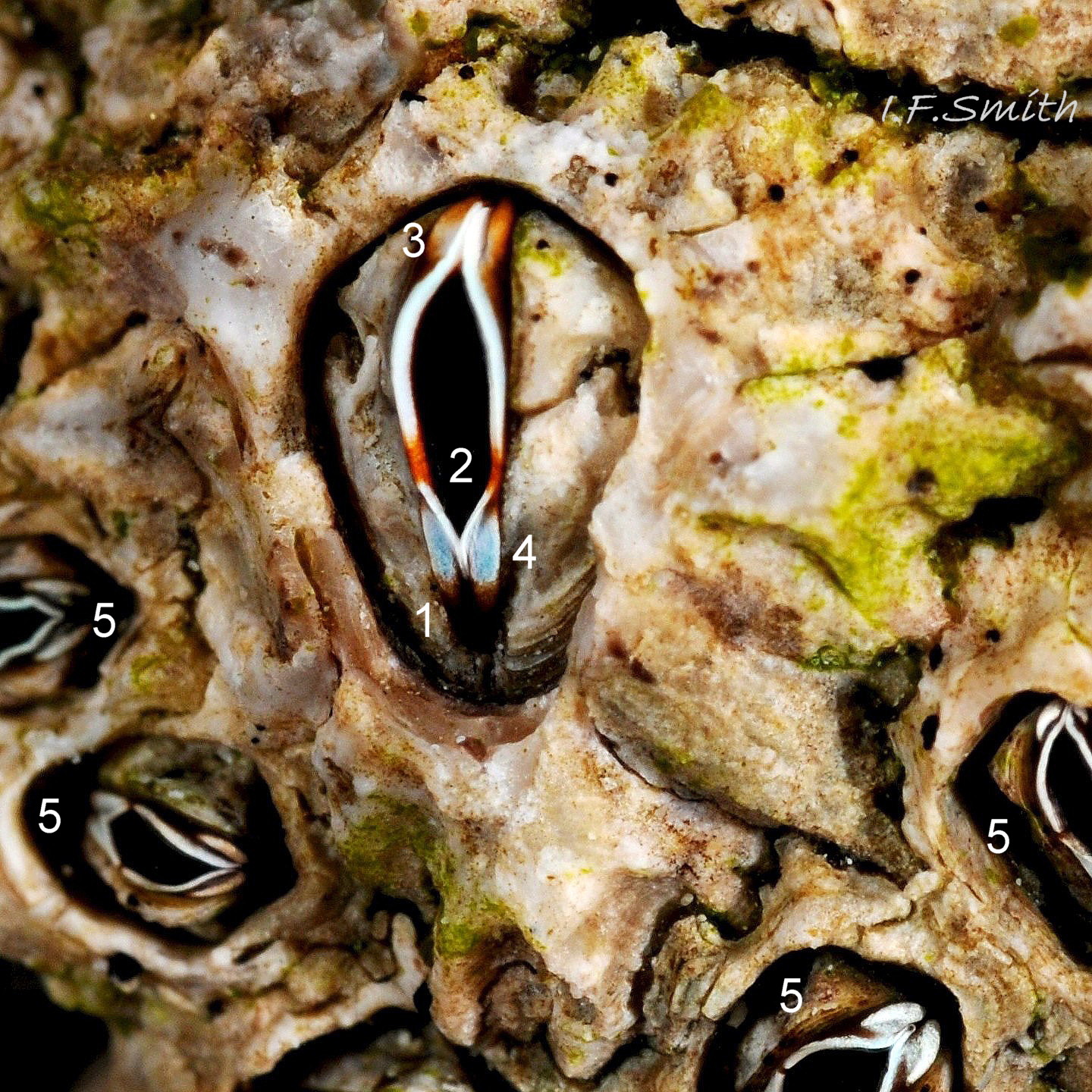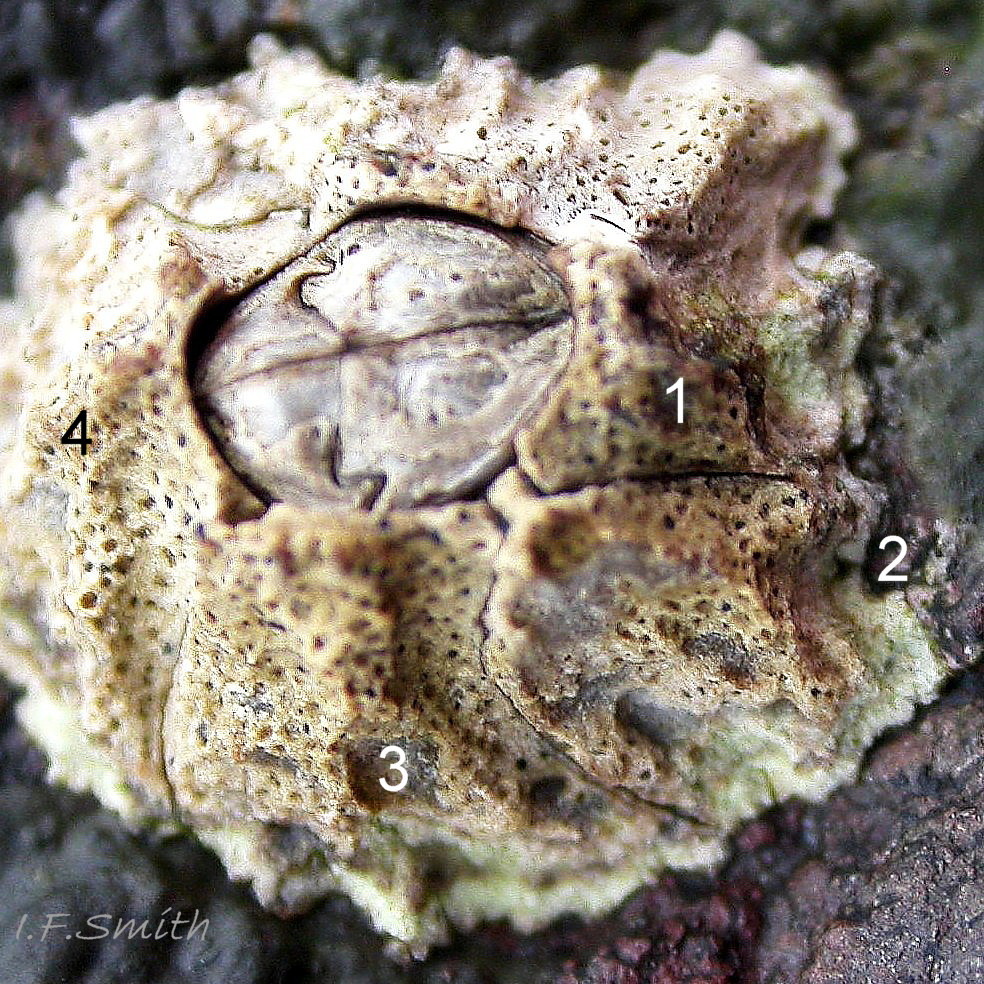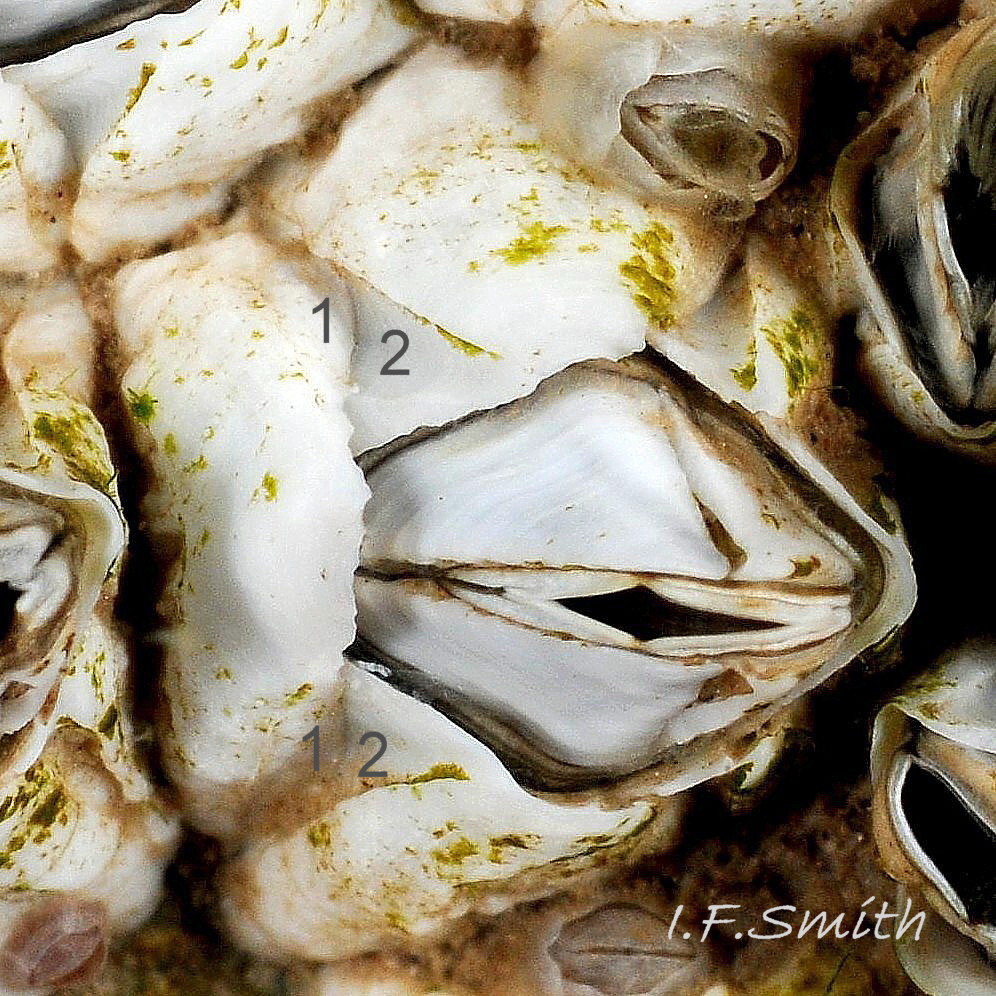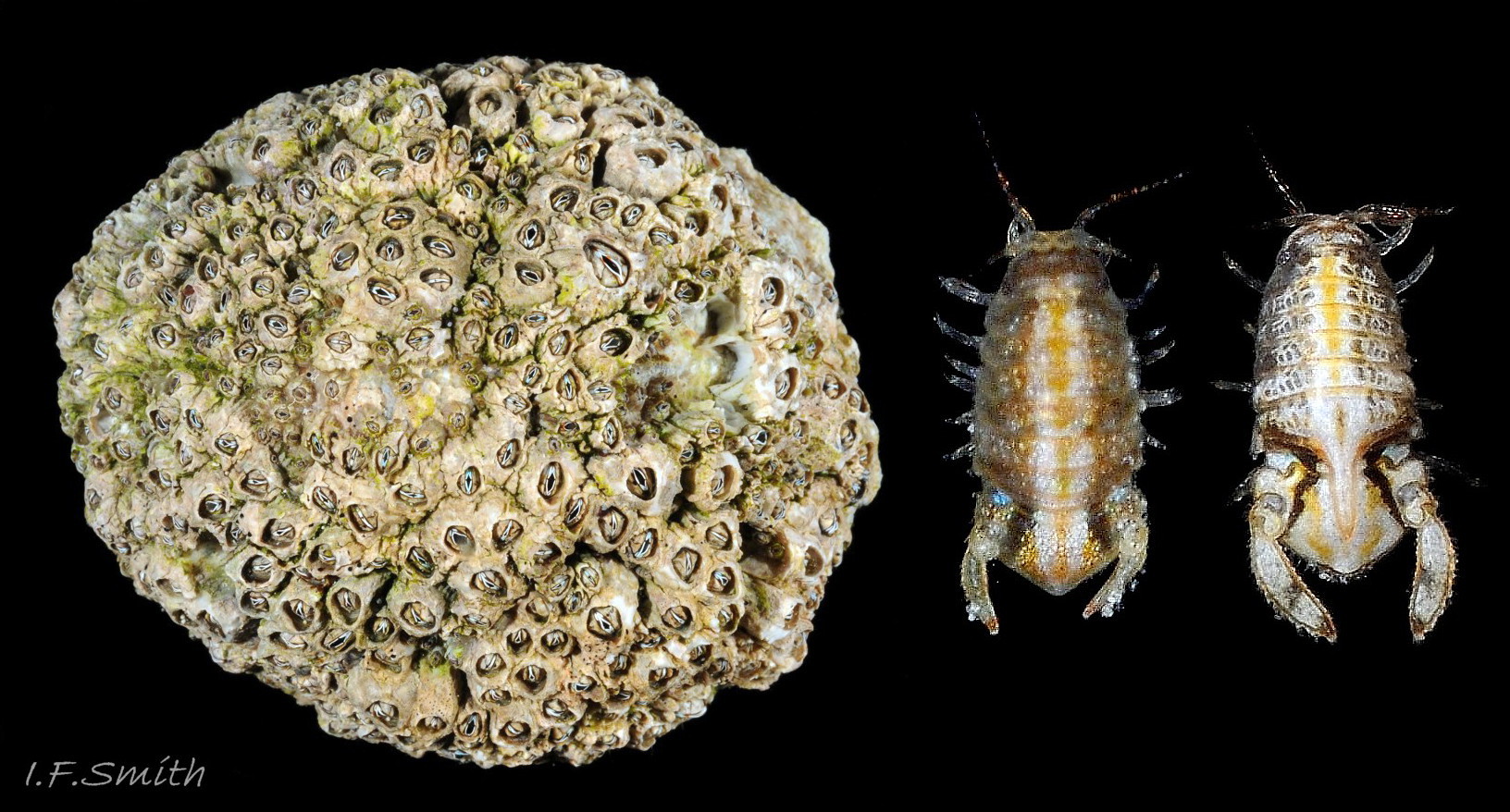Click image to enlarge with full caption. Main text below slider.
Chthamalus montagui Southward, 1976 text I.F. Smith
CURRENT TAXONOMY World Register of Marine Species www.marinespecies.org/aphia.php?p=taxdetails&id=106230
Recent synonyms
Pre 1976 records included in Chthamalus stellatus (Poli,1795).
Vernacular names
Montagu’s stellate barnacle, Crachen Montagu (Welsh).
DESCRIPTION **Glossary below.
opercular aperture (top opening)
Kite-shape [01 Chthamalus montagui] (not equilateral diamond); can vary to rounded kite [02 Chthamalus montagui] and resemble C. stellatus .
opercular valves (lid plates)
Four valves, two terga and two scuta [03 Chthamalus montagui], open along longitudinal midline with a tergum and scutum each side [02 Chthamalus montagui]. Whether closed or open, tergum usually remains fixed to its scutum [01 Chthamalus montagui]. Terga fill less than a third of aperture [02 Chthamalus montagui]. Opercular valves level with or a little below aperture rim when open [08 Chthamalus montagui]
tergoscutal flap (membranous seal on lid plates).
White, white faintly tinted blue, or dull blue. Small BROWN mark centrally at micropyle [01 Chthamalus montagui]. Brown to black mark at rostral end. Longitudinal lobe with white summit and brown base (fully exposed when valves open [04 Chthamalus montagui]) at carinal end. Away from the rim, between micropyle and rostrum, the flap may be grey-blue on white [01 Chthamalus montagui] or grey-brown on white [04 Chthamalus montagui]. Between micropyle and carina, back from the rim, the flap is usually brown [04 Chthamalus montagui].
wall plates
Six; delineating sutures often only visible on juveniles as usually fused and difficult to discern [ 05 Chthamalus montagui]. Rostral plate narrow [04 Chthamalus montagui], butts onto lateral plates. Plates solid, not porose. After bleaching, white with some pink-brown [06 Chthamalus montagui], especially internally near aperture. Usually discoloured dull yellow in life and heavily eroded and/or punctured by Cliona celata, boring sponge [05 Chthamalus montagui].
profile
When isolated, low mound [07 Chthamalus montagui], often very depressed on rock exposed to strong waves [05 Chthamalus montagui]. When crowded, low column about 6mm high [08 Chthamalus montagui].
base
Black membrane. Dull yellow [12 Chthamalus stellatus] flesh visible in barnacle when removed from substrate.
diameter & height
Usually under 10mm diameter, occasionally to 14mm. Crowded columns about 6mm high, occasionally 10mm.
IDENTIFYING FEATURES
Aperture: Kite-shape (not equilateral diamond), but can vary to rounded kite [01 Chthamalus montagui].
Tergoscutal flaps: White to blue, brown mark at micropyle and carinal end [01 Chthamalus montagui].
Wall plates: Rostral plate narrow, butts onto lateral plates [04 Chthamalus montagui].
Base plate: Black membrane. Dull yellow flesh inside barnacle. [12 Chthamalus stellatus]
Tide level: Commonest HWS to HW, some down to LWN. Not sublittoral.
SIMILAR SPECIES
Chthamalus stellatus
Aperture: Approximately broadly oval [01 Chthamalus stellatus] BUT can vary to rounded kite.
Tergoscutal flaps: White to blue, with bright orange at micropyle and carinal end [06 Chthamalus stellatus].
Base plate: Black membrane. Bright orange flesh inside barnacle [12 Chthamalus stellatus].
Wall plates: Rostral plate narrow [08 Chthamalus stellatus], butts onto lateral plates.
Tide level: Commonest MTL to MLWS, some up to HW. Not sublittoral.
Semibalanus balanoides
Aperture: Equilateral diamond, pentagon, irregular or (some juveniles) oval.
Tergoscutal flaps: Whitish to grey with white rim, brown/blackish at rostral end, brown at micropyle, but white at carinal end [10 Semibalanus balanoides].
Wall plates: Lateral plates butt onto wide rostral plate [15 Semibalanus balanoides].
Profile: Depressed.
Base plate: Membranous.
ECOLOGY
Stenohaline, full salinity. Commonest HWS to HW, some down to LWN. Not sublittoral. On rock, stones and live mollusca [13 Chthamalus stellatus] exposed to strong or moderate wave action, where it is may be the dominant littoral barnacle. Occupies less exposed sites where C. stellatus may be absent. Usually overlaps with shore zones of Balanus semibalanoides and Chthamalus stellatus. In Britain, breeds April to September, cyprids settle July to December.
DISTRIBUTION
N.E. Atlantic coasts from Orkney to Senegal and Canaries, and into Mediterranean. Scarce or absent on some islands such as Sicily, Crete, Madeira, Azores and North Rona.
See GBIF map www.gbif.org/species/2115617
British coasts westwards from Dorset to Scilly and thence north to Orkney. Most Irish coasts. Absent from much of Liverpool Bay and the North Sea apart from a few scattered records in northern part.
See NBN map species.nbnatlas.org/species/NBNSYS0000174547
Glossary
ala – (pl. alae) side flange of wall plate, overlapped by radius of next plate.
carina – posterior wall plate adjoining the smaller pair of lid plates (terga). carinal – (adj.) of the carina.
cirri – (sing. cirrus) feather-like thoracic limbs used in filter feeding.
cypris – (pl. cyprids) final larval bivalved stage in barnacle development.
euryhaline – tolerant of wide range of salinities.
HW- high water level.
HWS- level of high water spring tide.
lateral plates – wall plates other than end plates (depending on sp., strictly may be rostro-lateral or carino-lateral).
LWN- level of low water neap tide.
micropyle – small breathing/sensing hole between tergoscutal flaps, sometimes visible when operculum shut. Found on spp. that are left out of water for long periods.
MLWS- level of mean low water spring tide.
MTL – mid-tide level.
opercular – (adj.) of the operculum (aperture lid).
operculum – moveable lid-like structure used to close the aperture.
paries – ( pl. parietes) central section of wall plate, flanked by alae and radii.
ppt – parts per thousand (of salt in water).
radius – (pl. radii) side flange of wall plate, overlaps ala of adjacent plate.
right – on right when barnacle viewed from above with rostrum at 12 o’clock.
rostral – (adj.) of the rostrum.
rostrum – anterior wall plate adjoining larger pair of lid plates (scuta). (Lost on Elminius and balanoids; place taken by fused rostro-laterals; referred to as rostrum for simplicity.)
scuta – (sing. scutum) the larger plates of the operculum (lid).
sessile – (adj.) permanently attached to substrate (of immobile organism).
stenohaline – unable to tolerate much variation in salinity.
terga – (sing. tergum) the smaller plates of the operculum (lid).
tergoscutal flaps – membranous “lid seals”, (most visible as valves start to open).
References & links
Rainbow, P.S., 1984. An introduction to the biology of British littoral barnacles. Field studies 6: 1-51.
fsj.field-studies-council.org/media/350581/vol6.1_161.pdf
Southward, A.J., 2008. Barnacles. London, Linnean Society.
